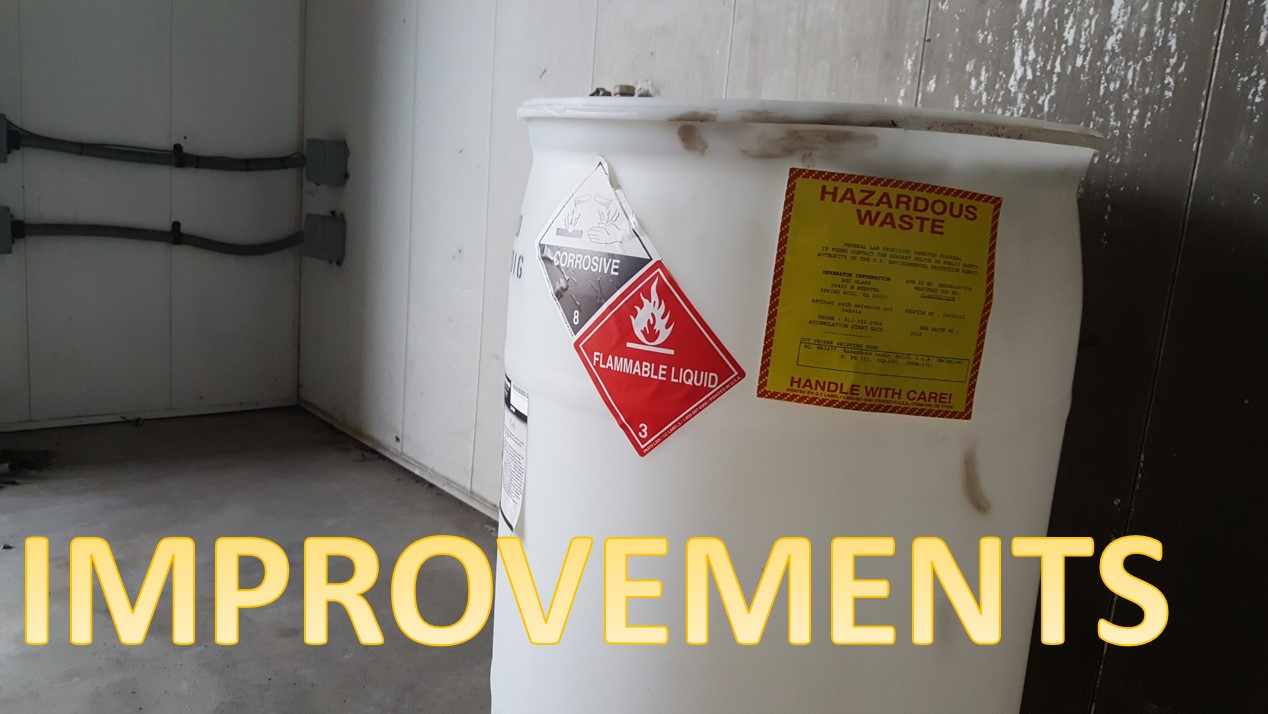A large quantity generator of hazardous waste (LQG) must have a contingency plan for its facility. The purpose of the contingency plan is to prevent and – if necessary – respond to a hazardous waste emergency.
The Generator Improvements Rule made revisions to the contingency plan regulations in several ways.
- Moved the regulations from 40 CFR 265, Subpart D to 40 CFR 262, subpart M.
- Removed the requirement to include facility emergency coordinator’s home address and home phone number.
- Revised requirements for the location of emergency equipment.
- Increased the scope to include hazardous waste in satellite accumulation areas.
- Included a facility’s Local Emergency Planning Committee (LEPC) with local emergency responders to be notified and informed by the LQG.
- Added a requirement to include a quick reference guide in new or updated contingency plans submitted to local emergency responders.
It is this last revision that is the subject of this article: The requirement of large quantity generators of hazardous waste to include a quick reference guide in their contingency plan.
Before we begin…
- The regulations for the quick reference guide are found at 40 CFR 262.262. Don’t be misled by the title: Copies of contingency plan. It includes the quick reference guide as a requirement when submitting copies of the contingency plan to local emergency responders.
- This section is only one of many in subpart M – Preparedness, Prevention, and Emergency Procedures for Large Quantity Generators. Some sections of this subpart (§262.250 through §262.256) are the same as the regulations for preparedness and prevention applicable to a small quantity generator (SQG) at §262.16(b)(8). Sections §262.260 through §262.265 are unique to an LQG.
- This new requirement is one of the regulations created by the Generator Improvements Rule which went into effect May 30, 2017 in the Federal regulations of the USEPA and in states lacking an authorized hazardous waste program. States with an authorized hazardous waste program must adopt this more stringent requirement by no later than July 1, 2018 or July 1, 2019 if a change to state law is required. Read: What is the status of the generator improvements rule in my state?
Scope and Applicability:
- This requirement applies solely to the following:
- An LQG that becomes subject to these regulations after May 30, 2017 and is therefore submitting its contingency plan for the first time.
- An LQG that amends its contingency plan after that date and is submitting those amendments.
- Copies of the new or amended contingency plan – along with the quick reference guide – must be submitted to all local emergency responders, to include:
- Police departments
- Fire departments
- Hospitals
- State and local emergency response teams that may be called upon to provide emergency services; and,
- Local Emergency Planning Committee, as appropriate
Interested in site specific training at your site that covers this topic, and more! Ask me about my Onsite Training |
The quick Reference Guide Must Include the Following Elements:
- The types/names of hazardous wastes in layman’s terms and the associated hazard associated with each hazardous waste present at any one time. Examples include:
- Toxic paint wastes
- Spent ignitable solvent
- Corrosive acid
- The estimated maximum amount of each hazardous waste that may be present at any one time.
- The identification of any hazardous wastes where exposure would require unique or special treatment by medical or hospital staff.
- A map of the facility showing where hazardous wastes are generated, accumulated and treated and routes for accessing these wastes.
- A street map of the facility in relation to surrounding businesses, schools and residential areas to understand how best to get to the facility and also evacuate citizens and workers.
- The locations of water supply (e.g., fire hydrant and its flow rate).
- The identification of on-site notification systems (e.g., a fire alarm that rings off site, smoke alarms).
- The name of the emergency coordinator(s) and a 24-hour emergency telephone number(s) or, in the case of a facility where an emergency coordinator is continuously on duty, the emergency telephone number for the emergency coordinator.
Contact me with any questions you may have about the generation, identification, management, and disposal of hazardous waste Daniels Training Services, Inc. 815.821.1550 |
Frequently Asked Questions About Quick Reference Guides:
Read: Frequently Asked Questions About Quick Reference Guides:
Conclusion and Opinion:
As noted earlier, this requirement must be implemented nationwide eventually since it is more strict than existing regulations. Though your state may not have adopted this new rule yet, it will. I think the advantages to including a quick reference guide in your contingency plan is clear; therefore I suggest you amend your contingency plan to include a quick reference guide and to submit these amendments to the local emergency responders identified above at your earliest convenience.

